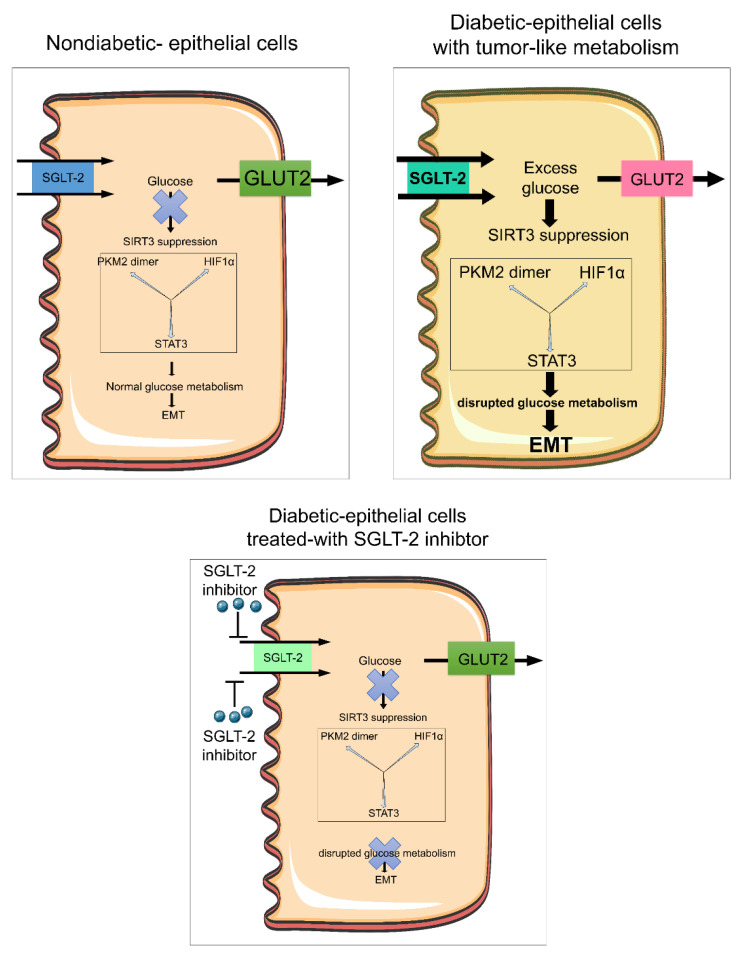Figure 2.
Pathological significance of urinary glucose in the disruption of glucose metabolism. SGLT-2 is highly expressed in diabetic epithelial cells. The function of SGLT-2 is to absorb urinary glucose which can then be reabsorbed into the blood, however, in severe diabetes, this excess glucose accumulates in the cytosol, activates SIRT3-deficiency-associated induction of augmented glycolysis and suppresses fatty acid metabolism. Accumulation of PKM2, HIF1α, and STAT3 phosphorylation play a key role in the disruption of central metabolism, a phenotype that is similar to the Warburg effect in tumor cells. This disruption in central metabolism leads to epithelial cell injury and promotes EMT processes. SGLT-2 inhibition abolishes these effects.

